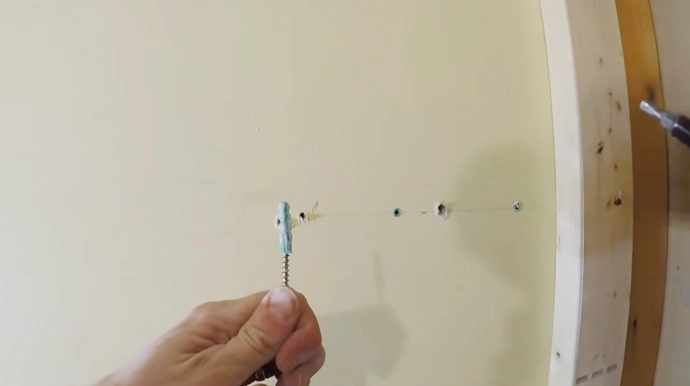Last Updated on March 29, 2023
From framed pictures to mirrors and clocks, drywall anchors are the trusty helpers when it comes to hanging things in your home. But what if you want a change of view? Can those precious anchor holes be reused, or do we have to start from scratch?
In a word, yes. Making new ones each time is certainly an option, but there are times when reusing them can be beneficial. It can save you time and effort and get the job done quicker. While it might sound like an easy solution, there are some do’s & don’ts to bear in mind before taking this route.
The following blog post will cover everything you need to know about using drywall anchors correctly. Before reusing them for your next project, check out these essential tips and tricks so everything can be securely in place with ease.
How Can You Reuse Drywall Anchor Holes With Confidence?
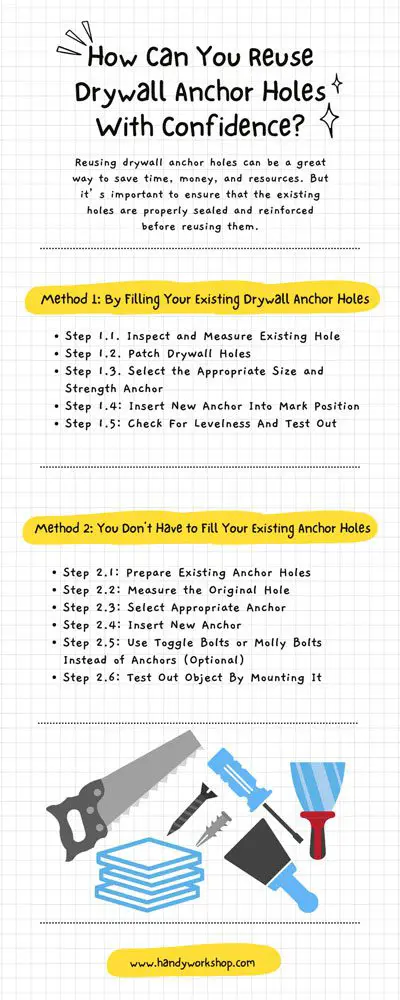
Reusing drywall anchor holes can be a great way to save time, money, and resources. But it’s important to ensure that the existing holes are properly sealed and reinforced before reusing them.
With the right materials and methods, you can confidently reuse drywall anchor holes without worrying about weakening your walls or compromising the integrity of your home. We’ve got two methods for reusing existing anchor holes in drywall.
Method 1: By Filling Your Existing Drywall Anchor Holes
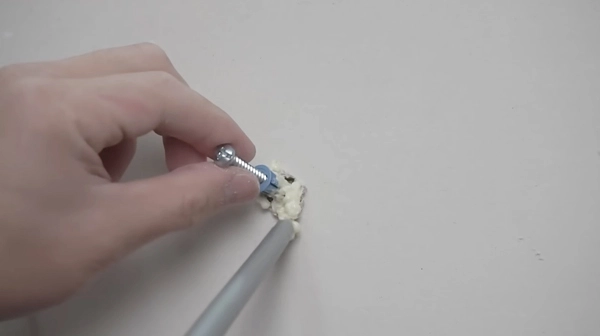
Step 1.1. Inspect and Measure Existing Hole
Before attempting to reuse a drywall anchor hole, it is important to inspect and measure the existing hole. This allows for a more precise assessment of the anchor size and strength required for the fastening application. Ideally, the holes should not be too large, as this can weaken the anchoring capabilities of the fastener.
And it is important to check for any damage or signs of wear on the existing hole before reusing it. This includes checking for any cracks, chips, or other structural damage that may have occurred over time. If any damage is found, it is crucial to patch and repair the area before reusing the drywall anchor hole.
Step 1.2. Patch Drywall Holes
Once any visible defects have been identified in an existing drywall anchor hole, be sure to take steps to patch and repair them before reuse. Depending on the extent of damage found in a hole, this may involve filling it with spackle or joint compound using a putty knife and allowing it to dry completely for proper adhesion.
Once dry, light sanding may be necessary depending on the type of filler used before priming and painting (if desired). Finally, mark the patched area with a pencil or marker so that you know exactly where you need to place your new anchor when reusing it.
Step 1.3. Select the Appropriate Size and Strength Anchor
When selecting the right anchor size and strength for reusing a drywall anchor hole, there are several considerations that must be taken into account based on your particular fastening application requirements.
First, choose an anchor with an appropriate width for your particular project – typically, 1/4” anchors are suitable for most projects requiring medium-weight support, while 3/8” anchors may be required when working with shelving or bookcases.
And select an anchor with enough strength for your project. Plastic anchors are generally suitable for light-duty applications such as hanging pictures, while metal anchors are better suited for heavier tasks such as mounting TVs or mirrors onto walls.
Step 1.4: Insert New Anchor Into Mark Position
Once you have selected an appropriate size and strength anchor for your project, you can begin inserting it into position by following two steps:
- Insert the new anchor plug at the marked point until flush with the wall surface. Then use a screwdriver to secure the plug firmly in place inside the hole (if applicable).
- If no plug is needed, insert your new screw directly into position until tight but not over-tightened, as this can cause damage to both wall surfaces and screws.
Step 1.5: Check For Levelness And Test Out
Finally, before trusting any reuse drywall anchor holes with heavier objects such as shelves or appliances, it’s always best practice to check their levelness first. If they’ve been misaligned since being installed, you can lightly tap them back into place.
It’s also recommended you test each reused drywall anchor hole beforehand by securing something lightweight, like a picture frame, so that you know everything works before deciding whether to trust them with something bigger.
Method 2: You Don’t Have to Fill Your Existing Anchor Holes
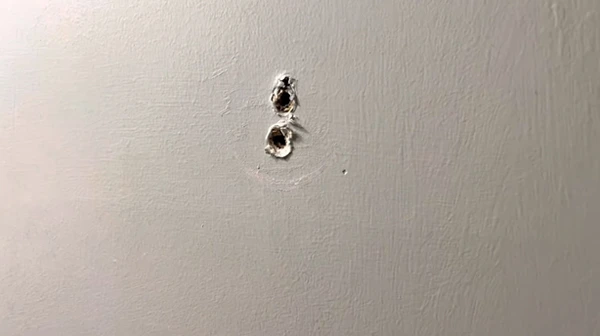
Step 2.1: Prepare Existing Anchor Holes
When it comes to preparing existing anchor holes, one of the most important steps is removing any particles or debris that has become lodged in the hole. This can be accomplished by using a vacuum cleaner hose attachment or a pair of tweezers, depending on the size of the particles and their position within the hole.
Once all particles have been removed, it is important to clean out any internal issues, such as corrosion on metal anchor points. This will help ensure that when a new anchor is inserted, there are no unwanted obstacles for it to encounter.
Step 2.2: Measure the Original Hole
The next step in reusing drywall anchor holes with confidence is accurately measuring the original hole. This can be done using either a tape measure or a ruler based on the size of the hole and its depth from the surface.
It is important to remember that even small measurement variations can make a big difference when inserting a new anchor into an existing hole. Therefore, it is always best to take extra care to ensure that measurements are as precise as possible.
Step 2.3: Select Appropriate Anchor
Once measurements have been taken, selecting an appropriate anchor for reusing in a drywall anchor hole is essential. There are several types of anchors that are available for purchase.
But it is important to take into account both weight requirements and what type of material will be used when selecting which one would work best. Plastic anchors are often recommended for lighter objects, while metal anchors may be better suited for heavier items.
Step 2.4: Insert New Anchor
When doing so, it is important to ensure that it fits securely within its allotted space without any gaps between itself and either side of the wall or ceiling where it has been placed. To do this properly usually requires drilling pilot holes if necessary and then slowly tapping in each screw until fully secure.
If plastic anchors are used instead of metal screws, then typically, only one plastic plug needs to be inserted into each opening due to their strength and stability once installed correctly.
Step 2.5: Use Toggle Bolts or Molly Bolts Instead of Anchors (Optional)
Another option is using molly bolts or toggle bolts instead of traditional anchors. Both types offer excellent durability due to their ability to expand within walls after insertion and provide added security against potential movement once installed correctly.
They also offer more flexibility than traditional anchors because they can be used on thicker materials such as wood or concrete without needing additional hardware modifications before installation begins.
As an added bonus, they don’t require pilot holes before placement which saves time overall during installation while still providing reliable results when attached properly afterward.
Step 2.6: Test Out Object By Mounting It
The final step involves testing how securely an object has been mounted after the installation is successfully completed by conducting periodic checks throughout its lifetime. If possible, within safety regulations relating to access height and weight limits, etc.
To make sure that whatever you have mounted is securely in place, a simple push test can show how firm its connection to the wall or ceiling really is. Anything more than a few millimeters of difference between them should signal further tightening. Otherwise, it could risk loosening and needing replacement due to normal wear over time.
When Should You Not Reuse Drywall Anchor Holes?
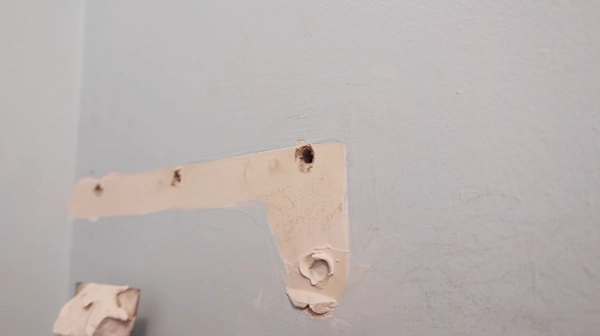
It is not recommended to reuse drywall anchor holes since the anchors and screws have weakened the wallboard over time. This means that the wall’s integrity in those locations may be compromised, making them less secure for future use.
The effectiveness of any drywall anchor and screw decreases with each installation and removal, meaning that reusing them makes them even less effective and reliable. And when removing a drywall anchor, pieces of the material can break away from the backside of the wall, leaving an uneven surface in place for future use.
For optimal security, it is best to avoid reusing holes from existing drywall anchors as much as possible. Here are some advanced drywall anchor ideas for heavier objects:
Self Drilling Drywall Anchors and Screws Kit
This kit is designed to help you easily secure items to drywall without needing pre-drilling. It includes different assorted sizes of anchors and screws made from carbon steel, which offer extra strength and durability.
The plastic drywall wall anchors are designed to provide a more secure grip on hollow walls, making it much easier to hang pictures, shelves, mirrors, and other items with confidence.
You Might Want to Check: Can a Hammer Drill be used to mix mud?
Different Assorted Size Anchors and Screws
This kit provides various sizes of anchors and screws suitable for various tasks. The anchors are constructed from carbon steel, offering enhanced strength compared to standard materials. The screws feature a self-tapping design that allows them to be quickly screwed into drywall without pre-drilling.
Carbon Steel Hollow Wall Anchor
These hollow wall anchors are crafted from durable carbon steel for superior strength to regular materials. The unique design allows them to be quickly installed into even the most uneven surfaces without pre-drilling, providing an extra secure grip for mounting shelves and other objects in your home or office.
Plastic Drywall Wall Anchors Screws
These plastic wall anchoring screws are designed specifically for use with drywall surfaces. They are self-tapping so that they can be easily inserted into even the densest of wall types without pre-drilling needed.
The plastic material offers increased resistance against corrosion while also adding additional support when hanging lightweight items on your walls.
Can You Use Drywall Anchors Twice Due To the Reuse of Holes?
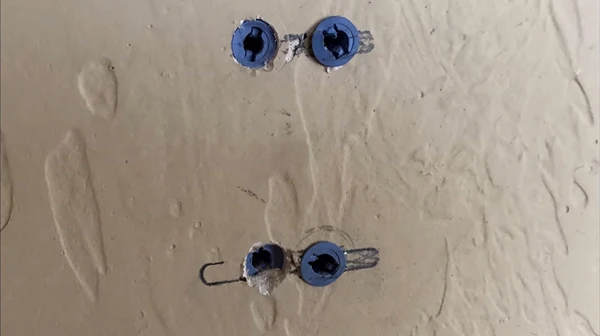
Yes, it is possible to use a drywall anchor twice since holes are reused in certain situations. Yet drywall anchors are not designed for frequent reuse due to wear and tear on both the anchor and the wallboard itself.
Each time an anchor is removed and replaced in a hole, there will be some damage done to both components, which can eventually lead to weak points in your wall structure or a decrease in holding power over time.
It is recommended that if you need to reuse a hole multiple times, you should switch out your anchor with a new one periodically to maintain optimal security within your walls.
Are Drywall Anchors Easy To Remove When Reusing Holes?
Removing existing drywall anchors depends upon several factors, such as size and type of anchor used and how much wear-and-tear has occurred over time due to multiple installations and removals.
Generally speaking, most standard plastic or metal drywall anchors are fairly easy to remove as long as they haven’t been installed too deeply within your walls or become overly corroded or damaged by weathering over time.
Smaller plastic or toggle-style anchors require only a small phillips head screwdriver, while larger ones may require more specialized tools, such as a drill bit specifically designed for this purpose.
Is It Risky to Reuse Drywall Anchor Holes?
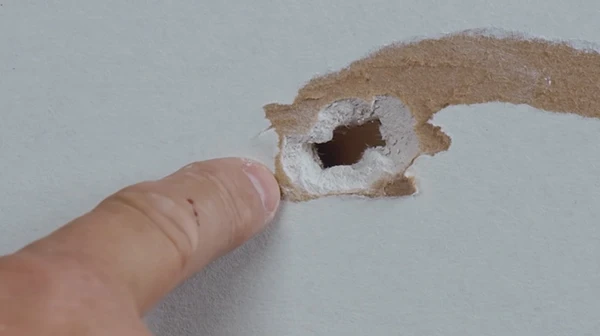
Reusing drywall anchor holes can be a risky proposition, as it is possible to weaken the wall and cause structural damage due to overstressing the drywall. Without adequately identifying the existing hole size and type, reusing them can lead to an improper fit of the new anchor, resulting in failure.
An improperly fitted anchor could result in a partial or complete loss of support for whatever it was intended to hold up. If an oversized hole has been drilled, this may weaken the surrounding drywall even further and cause it to sag over time.
When reusing existing holes, it’s essential to carefully measure the size of the existing hole and select an anchor with the appropriate size and strength for your needs. Knowing how to fill or patch existing holes properly is also essential for ensuring a secure installation.
With the proper knowledge and tools, reusing an existing drywall anchor hole can be a simple process and help make any project much easier.
